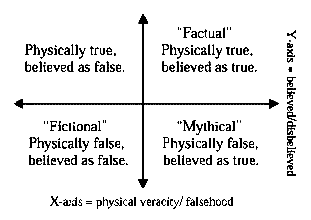
Figure 1. A model of factuality / belief interactions suggested by Lombardo (2003).
|
Deconstructing Cinderella - Helping students explore their personal myths by Tim Newfields (Toyo University) |
|
Abstract |
|
| Keywords: myth deconstruction, myth analysis, gender roles, Cinderella complex, Disneyfication, critical inquiry, rhetorical fiction | |
Myths define enemies and aliens and in conjuring them up they say who we are and what we want. They tell stories to impose structure and order. Like fiction, they can tell the truth even while they're making it all up. (p. 63)Though it is easy to dismiss myths as trifling affairs affecting only children, they are more pervasive. For example, Glantz (2004) postulates that American foreign policy during the Bush administration was powerfully shaped by the cowboy myth – the image of a lone ranger trying to "set things right" with hard bullets. Conversely, Alsto (1986) avows that many Japanese embrace what could be called a samurai myth – a way of viewing the world as competing clans in which collective loyalty is tantamount.
| " if we want to discover what is important to an individual or culture, it is often good to examine their underlying myths." |
Of course I will marry a kind man and have children. If a man and woman love each other, they will be happy. If a couple is unhappy, maybe they don't really love. . . . Couple who love can solve any problem and feel happy forever. I want to be like that and raise a wonderful, close family. - Miho (Age 19)
[ p. 38 ]
Key Terms
|
[ p. 39 ]
|
| "I prefer to think of [deconstruction] . .. as a basic process of critical exploration which anyone can (and should) undertake." |
|
[ p. 40 ]
| " myths are not unlike cocoons which nurture as well as confine." |
| Activity | (1) Concept Clarification |
(2) Preliminary Discussion |
(3) Step Forward |
(4) Question Formulation & Discussion |
(5) Homework Explained |
| Format | Teacher Lecture | Pairs/Sm. Groups | Whole Class | New Pairs/Sm. Groups | Teacher Lecture |
| Suggested Time | 10 min. max. | 20 min. | 30 min. | 25 min. | 5 min. |
[ p. 41 ]
* character * gender * hard work * honesty * love * marriage * poverty * violence * death
[ p. 42 ]
| DOS |
| Take a step forward if a statement applies to you or you agree with it. |
| Feel free not to step forward if you are uncomfortable. |
| Observe the patternings of the group after each statement. |
| DON'TS |
| Verbally explain why you stepped forward at this point - work in a non-verbal mode. |
| Comment on how others are positioned in the room - maintain silence during this phase of the activity. |
| Mention who stepped forward outside of this class- respect the privacy of the participants. |
[ p. 43 ]
|
|
[ p. 44 ]
Imagine that you were Cinderella and you could enjoy one special night as you wished. What would you do that night? Who would you meet? Where would you go? What would you wear? What would you eat? Describe how you would spend your special night in as much detail as possible. Your essays should be about 100-200 words in length.
| Activity | (1) Story Comparisons |
(2) Traditional Role Plays |
(3) Alternative Role Plays |
(4) Rescripting your stories |
| Format | Sm. groups | groups of 5-6 | same group | with partners or homework |
| Suggested Time | 30-40 min. | 15-20 min. | 15-20 min. | up to 20 min. |
[ p. 45 ]
a. Cinderella b. The Royal Heir c. Step-mother d. Fairy Godmother e. Elder step-sister f. The Privy Minister
Now imagine you have the magic to recreate your own character and change the way you acted in your assigned role. Go through the role play one more time with the same participants, but this time instead of worrying how you are "supposed" to behave according to the traditional Cinderella myth, imagine you could change that myth and act the way you really wanted to. (Give participants a moment to think about this before stepping into the actual role play.)
[ p. 46 ]
[ p. 47 ]
Conclusion| "the need for consciousness raising activities such as the ones described in this paper seems . . . timely." |
Acknowledgement
Many thanks to Jane Jortiz-Nakagawa and Peter Ross for their feedback on this paper.
| Categorical Index |
Chronological Index |
Subject Index |
Title Index |